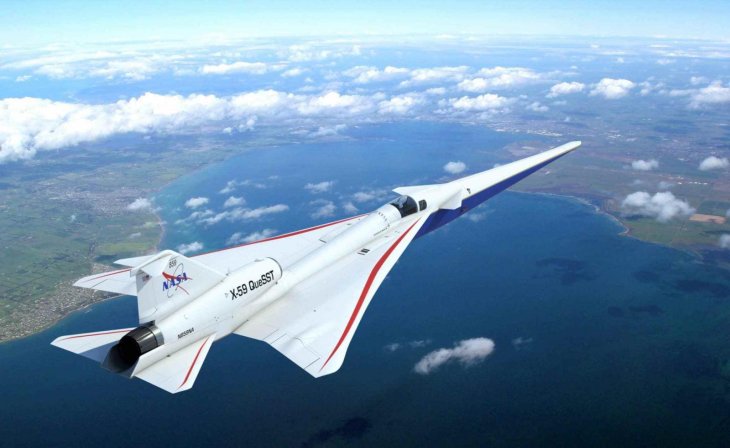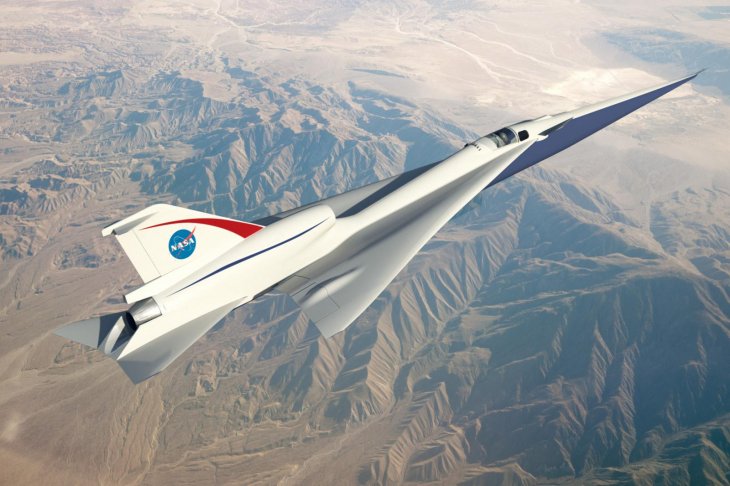What To Know About NASA's New Supersonic Aircraft
Anil Singh - Dec 20, 2019
![]()
This supersonic plane is a result of the cooperation between NASA and Lockheed Martin.
- This Real-Life UFO Can Take Off From Any Direction
- Ampaire Tested Biggest Electric Plane With Fuel Saving Hybrid Propulsion
- When This Hypersonic Plane Comes To India, Flight Time Will Be Reduced By 10 Times
In order to create an outstanding and speedy plane for trading, NASA has crossed out a trial airplane designed to decrease or even erase the sonic explosion. Consequently, it successfully got the allowance of the space agency to continue developing the QueSST, which stands for X-59 Quiet SuperSonic Technology Plane by Lockheed Martin Corporation.

Aiming at the very first test flight in 2021, its manufacturers are making great efforts to develop these following key qualities:
1. 'Quiet'
This is the most essential and viable feature that makes QueSST different from other planes. Its shape is designed to decrease and even eliminate the sonic explosion created when the plane reaches the ground. According to Lockheed Martin, when the plane was tested last year, the breaking sound of the plane was only as loud as the one created when closing a car door, instead of a usual sonic boom.
2. 'Speedy'
QueSST is proud of its superfast speed, which is illustrated by the fact that it can reach the velocity of 940 mph or approximately Mach 1.4 in the distance of 55.000 feet.
Timeline
Since the beginning at Lockheed’s Skunk Works in California, QueSST’s manufacturers have been on the work to finally assemble and integrate it in late 2020. Updated this week, the finished product needs the last one review so that they can start the first test flight.
Next, they will name the plane as Concorde’s Son after their full-scale production, posted on some social networking sites and lay above crowded regions to take a sound measurement and survey public perception. Then they will base on the results recorded to establish the laws for trading supersonic air transportation. To support their ideas, NASA’s Aeronautics associate administrator Bob Pearce also reassured that they had been well-prepared for the research which had historical meaning for the nation’s air transportation.
Featured Stories

Features - Jul 01, 2025
What Are The Fastest Passenger Vehicles Ever Created?

Features - Jun 25, 2025
Japan Hydrogen Breakthrough: Scientists Crack the Clean Energy Code with...

ICT News - Jun 25, 2025
AI Intimidation Tactics: CEOs Turn Flawed Technology Into Employee Fear Machine

Review - Jun 25, 2025
Windows 11 Problems: Is Microsoft's "Best" OS Actually Getting Worse?

Features - Jun 22, 2025
Telegram Founder Pavel Durov Plans to Split $14 Billion Fortune Among 106 Children

ICT News - Jun 22, 2025
Neuralink Telepathy Chip Enables Quadriplegic Rob Greiner to Control Games with...

Features - Jun 21, 2025
This Over $100 Bottle Has Nothing But Fresh Air Inside

Features - Jun 18, 2025
Best Mobile VPN Apps for Gaming 2025: Complete Guide

Features - Jun 18, 2025
A Math Formula Tells Us How Long Everything Will Live

Features - Jun 16, 2025

Comments
Sort by Newest | Popular